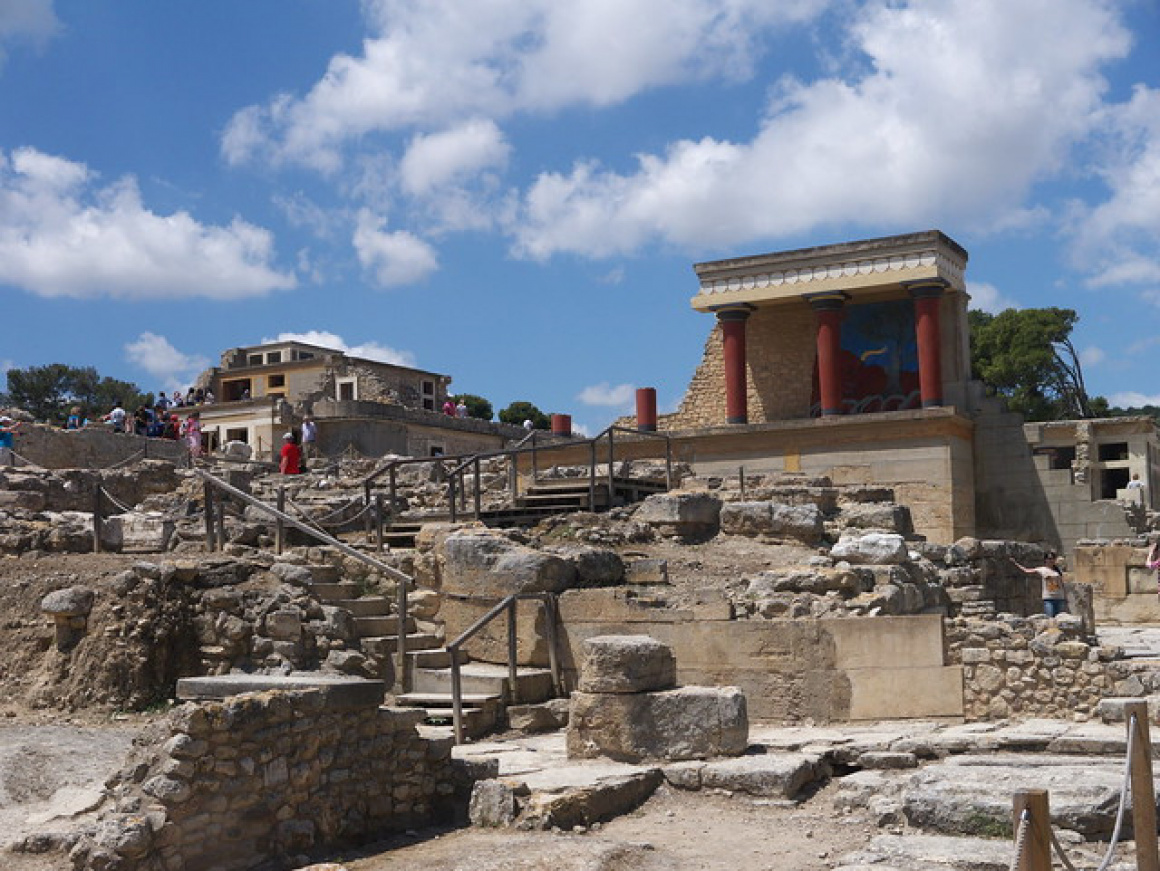Stepping into myth and history: Walking through the entrance of Knossos Palace, I feel as if I've slipped 3,500 years back in time. This is not just a set of ruins – it's the very stage upon which Europe's earliest advanced civilization, the Minoans, thrived. According to legend, this was the palace of King Minos, home of the Labyrinth that imprisoned the fearsome Minotaur. As I step on the smooth paving stones, I imagine the bustling courtyards once filled with priestesses in flowing dresses and craftsmen carrying pottery. Knossos is considered by many to be the oldest city in Europe, and wandering here, among remnants of multi‐story buildings and sophisticated infrastructure, truly brings that heritage to life. I like to arrive early in the morning, just as the site opens, to enjoy the cool air and relative solitude. The sunlight slanting over the ruins gives everything a golden glow – perfect for envisioning the palace in its heyday, painted in vivid reds and blues.
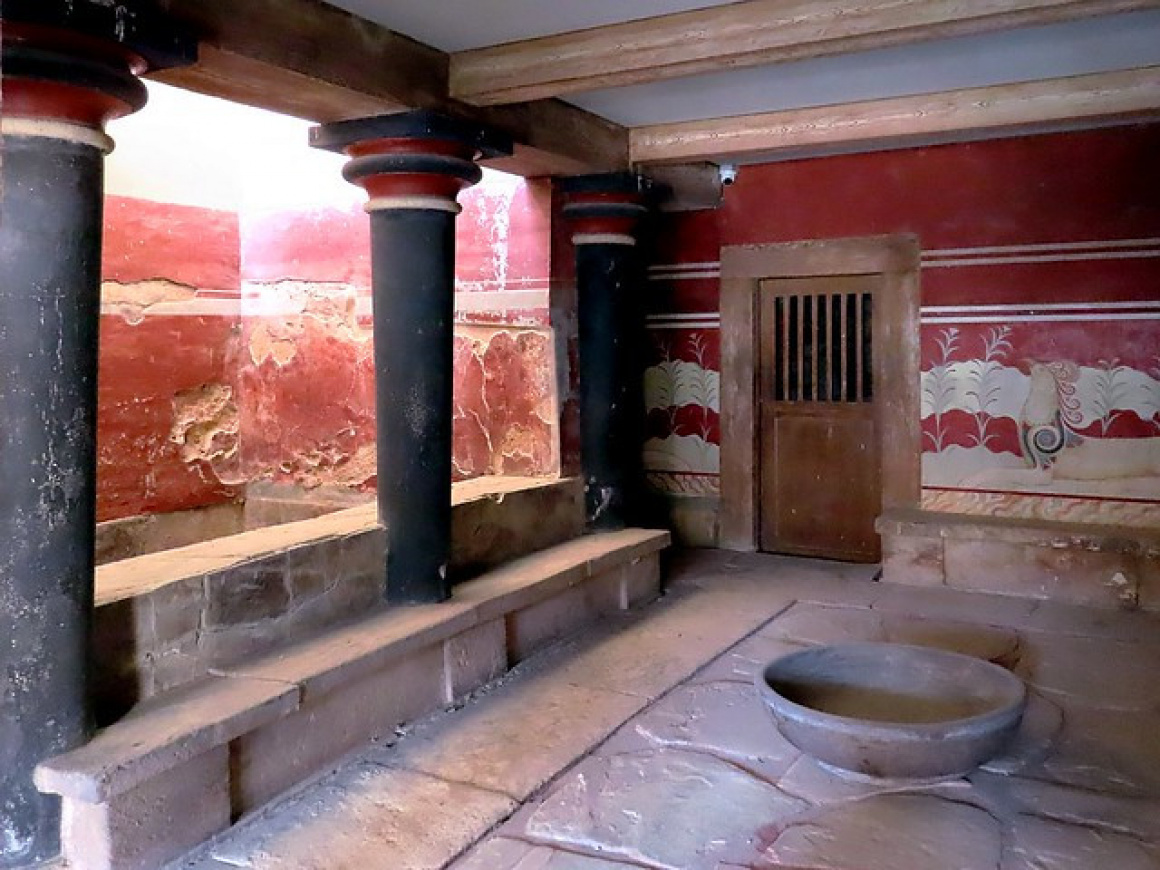
 'Throne Room' - Attribution: D-Stanley
'Throne Room' - Attribution: D-StanleyExploring the Palace Complex
The palace is a maze of restored rooms, grand staircases, and courtyards – it's easy to see how the Labyrinth myth was born here. Legend says the craftsman Daedalus built an elaborate maze at Knossos Palace to contain the half-man, half-bull Minotaur. Some even speculate the palace's layout was the labyrinth of myth. Walking through the Central Court, I can almost hear echoes of ancient festivals; this vast open space would have been the hub of religious ceremonies, perhaps even bull‐leaping rituals where acrobats vaulted over charging bulls in a display of agility and worship. On the north side, I peek into the Throne Room – a small chamber where a stone seat (Europe's oldest throne) rests against the wall and faded frescoes of griffins guard the space. It's humbling to think I'm looking at a seat where the Minoan priest‐king or queen once sat, around 1500 BC. Nearby, a series of rooms known as the Queen's Megaron showcase elegant living quarters; here you'll find the famous Dolphin Fresco (a copy – originals are in the museum), depicting playful dolphins, which always brings a smile to my face. The Minoans clearly loved nature and the sea, as shown in their art.
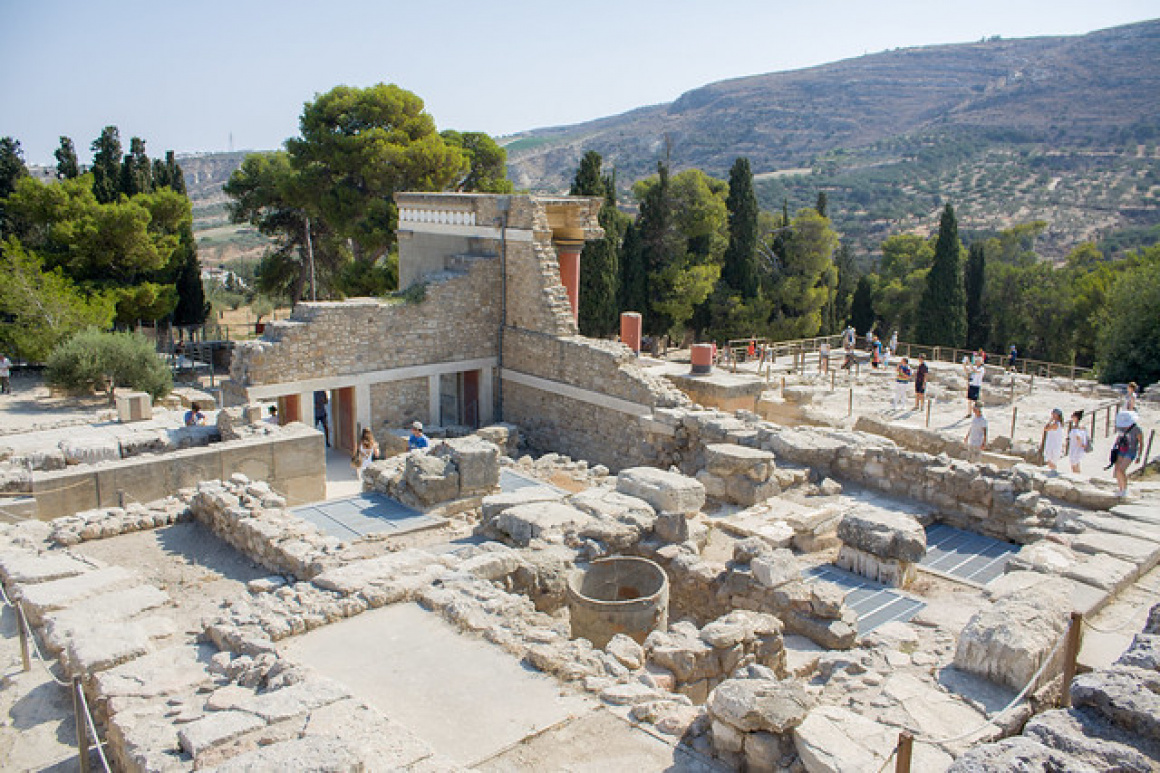
 'Knossos Palace' - Attribution: Shadowgate
'Knossos Palace' - Attribution: ShadowgateDescending a grand staircase, I enter what Sir Arthur Evans (the archaeologist who excavated Knossos in the early 1900s) dubbed the Hall of the Double Axes. Its pillars and doorways, partially reconstructed, give a sense of the palace's complexity and the advanced architecture that allowed light and air into the interiors. You'll notice many of the columns here are red and taper downward – a unique Minoan design. Evans restored some areas controversially with concrete and imaginative painting; as a local, I have mixed feelings about that, but I admit it does help non‐archaeologists visualise the spaces. Perhaps the most striking reconstruction is the North Entrance with a charging bull fresco – a visually dramatic spot that's popular for photos. While you explore, keep in mind you're moving through multiple levels of what was essentially a small city: the palace covered about 5 acres, with over 1,000 rooms including extensive storage magazines (where giant clay pithoi jars stored olive oil, wine, and grain – you can still see some originals in place).
Mythical Connections
Knossos is drenched in myth. Aside from the Labyrinth and Minotaur tale, this is where Theseus, the prince of Athens, came to slay the Minotaur with the help of Ariadne's thread to find his way out. I often share the story with friends as we stand in the Central Court, pointing to the west where the Magazines of the Giant Pithoi could be imagined as dark corridors of the labyrinth. It sends a shiver down the spine to think of Theseus creeping through these very grounds (in mythic terms). Another layer of lore: King Minos was said to receive laws from his father Zeus every nine years in a cavern – linking Knossos to the divine right of kings. And don't miss the small shrine room off the Central Court: here a sacred symbol of the Minoans, the Double Axe, was found, likely used in rituals. The richness of legend at Knossos means that as you explore, you're never quite sure where history ends and mythology begins – and that is part of the magic.
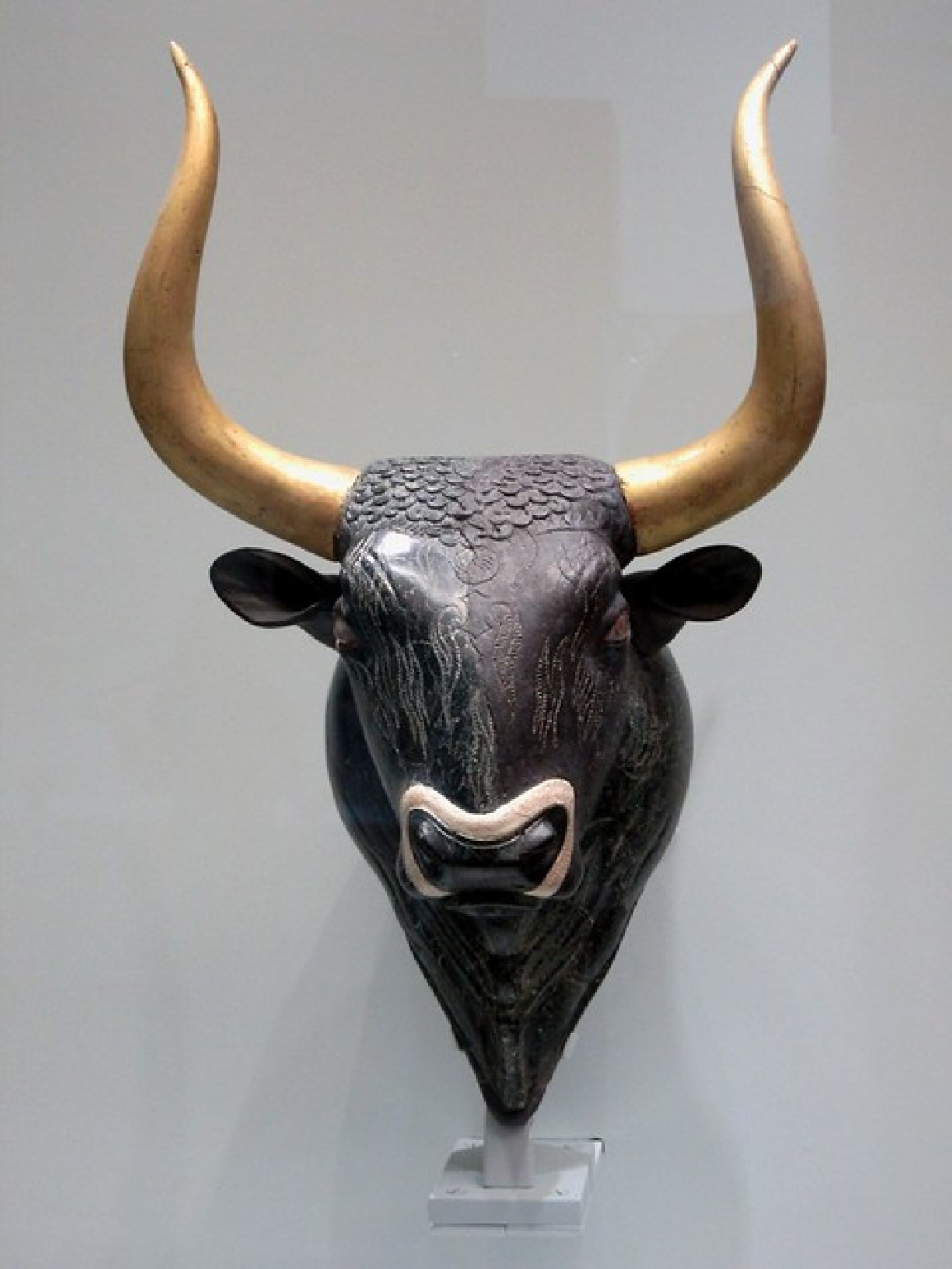
 'Bull's Head Rhyton' - Attribution: D-Stanley
'Bull's Head Rhyton' - Attribution: D-StanleyVisiting Tips and Experience
By midday, Knossos can get quite hot and crowded, especially in summer when cruise ship groups arrive en masse. My insider tip is to hire a knowledgeable guide at the entrance or use a good audio tour; the ruins come alive with interpretation. A guide will point out subtle details: the sophisticated drainage system and aqueducts that delivered running water, the first of their kind in Europe, or the raised walkways thought to be processional paths. You might also learn about the catastrophic volcanic eruption of Thera around 1600 BC that many believe weakened the Minoans, leading to their eventual decline around 1400 BC, possibly at the hands of Mycenaean Greeks.
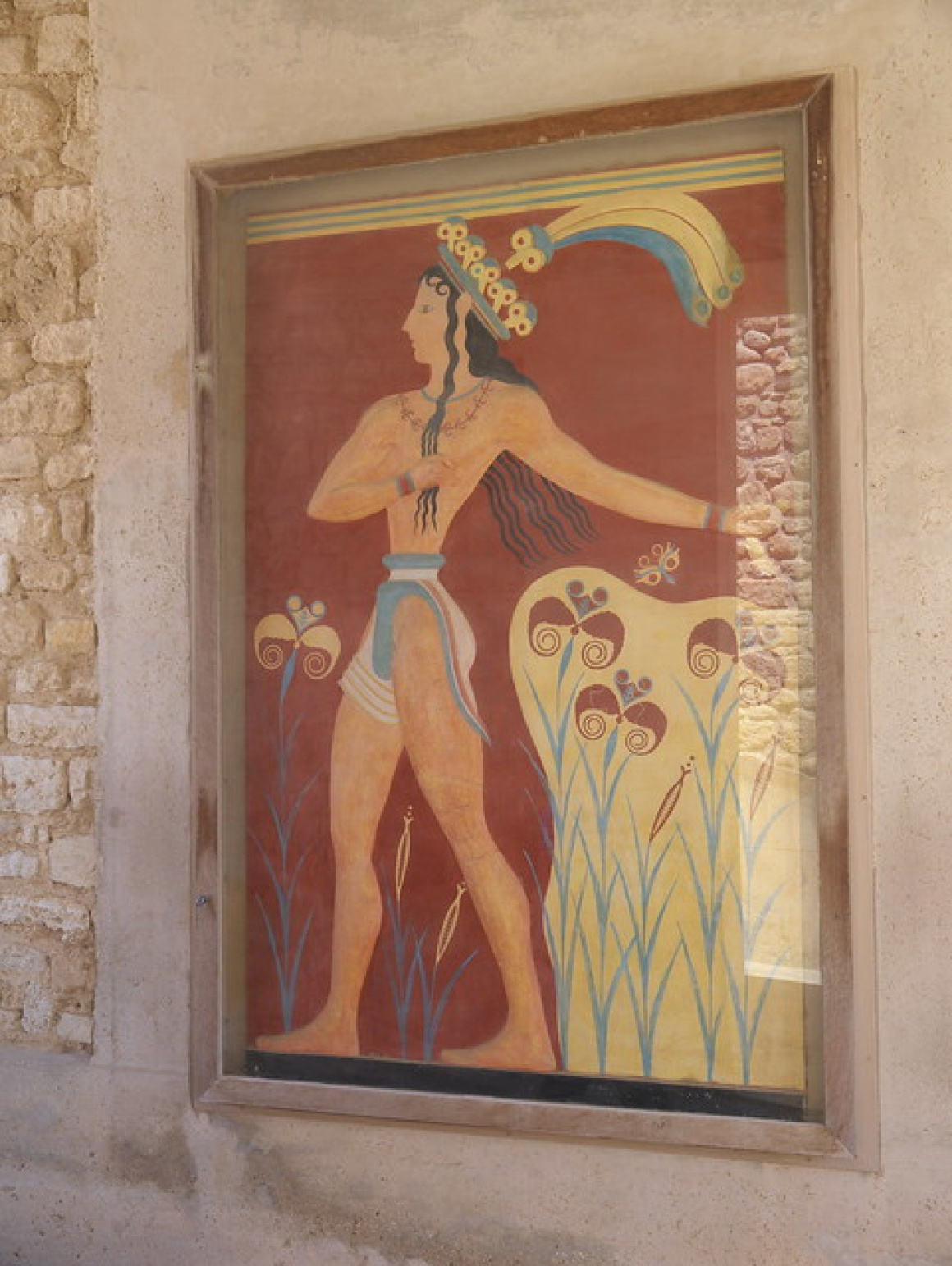
 'Knossos' - Attribution: Tim Schofield
'Knossos' - Attribution: Tim SchofieldAs you wander, be respectful of roped‐off areas and signage – they protect both you and the ancient structures. And bring water; there's little shade except in the restored rooms. One of my personal favourite quiet corners is by the South Propylaeum, where fragments of the Prince of the Lilies fresco (or as some suggest, a priestess with lilies) have been reconstructed on a wall. Few people linger here, and it's a spot I like to pause and reflect on the creativity of the Minoans. Imagine, around 1700–1450 BC, Knossos was at its peak – a bustling, colourful, ritualistic, administrative centre with possibly up to 100,000 people in the greater area. It was not only the political seat but also likely held religious significance (some believe the labyrinth is symbolic of a spiritual journey).
Leaving the Labyrinth
Exiting Knossos, I often feel a mix of awe and melancholy – awe at the advanced society that flourished here, and melancholy that we still know so little about them (we haven't fully deciphered their script, Linear A, so much of their story remains a mystery). Outside the site, you'll find a few cafés and souvenir stands. I usually cool off with a fresh orange juice at the café just across the street, under the grapevine trellis. It's a moment to decompress and let the experience sink in. Knossos isn't just stones and reconstructions – it's a testament to human imagination. Both the imagination of the Minoans, who built this labyrinthine complex with its playful art and engineering marvels, and the imagination of those who rediscovered it, weaving tales of Minotaurs and ancient kings to make sense of what they found. As I drive away down the olive tree‐lined road back to Heraklion, I like to think of Ariadne's thread, guiding us through the maze. In a way, every visitor to Knossos follows that thread – through myth, through history – and emerges with a deeper appreciation for how Crete's past continues to captivate us all.
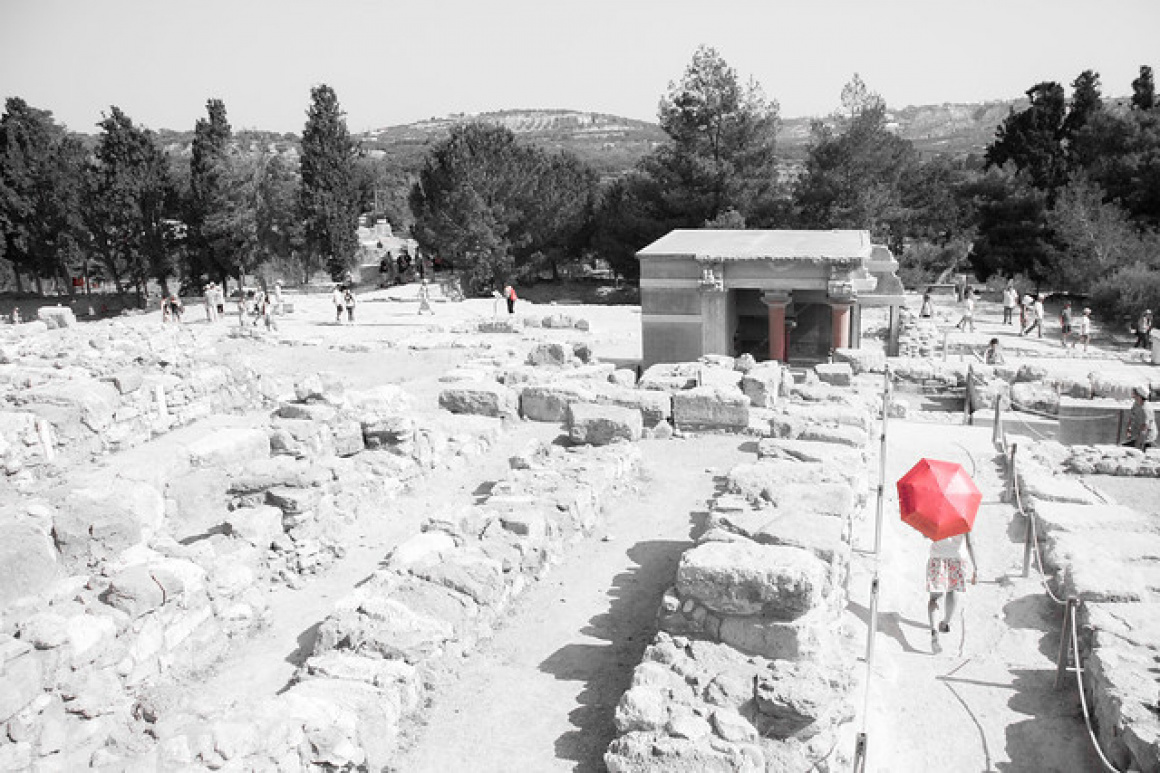
 'Knossos Palace' - Attribution: Shadowgate
'Knossos Palace' - Attribution: ShadowgateWhere to Stay for a Knossos Visit
While nobody can stay at the palace itself – though how amazing would that be? – the nearby city of Heraklion is the best base for exploring Knossos, just 5 km away. Here are some recommended hotels in Heraklion that make reaching Knossos easy while offering comfort and local flavour.
Aquila Atlantis Hotel - One of Heraklion's top hotels, Atlantis is a sleek 5-star property very close to the Archaeological Museum. If you want to immerse yourself in Minoan finds after seeing Knossos, staying here is ideal. The hotel boasts luxurious rooms (ask for one with a sea view towards the harbour), a gorgeous rooftop pool, and extensive breakfast options. After a hot day at Knossos, relaxing in Atlantis' cool, air-conditioned elegance or taking a dip with city views feels heavenly.
Kastro Hotel - A solid mid-range choice, Kastro is tucked in the heart of Heraklion's old town. It's within walking distance to Lion Square and the museum, yet on a quieter street for a good night's rest. The rooms, while not overly fancy, are modern, well-kept, and roomy, often with little balconies. The staff are exceptionally friendly – they'll gladly arrange a taxi or give you the local bus timetable for Knossos. The included breakfast is generous, featuring Cretan pies and cheeses. Great value for money and convenience.
ibis Styles Heraklion Central - A contemporary hotel option for those who prefer international-standard accommodations with a stylish twist. Though part of the Ibis chain, this hotel incorporates Cretan themes in its décor and is very highly rated. Its location is fantastic – right by the central market and a short stroll to the bus stop for Knossos. Rooms are bright, with comfortable beds and many have views over the city's rooftops toward the sea. There's also a secure parking garage (handy if you have a rental car). Families will appreciate the spacious family rooms and the playful design touches.

